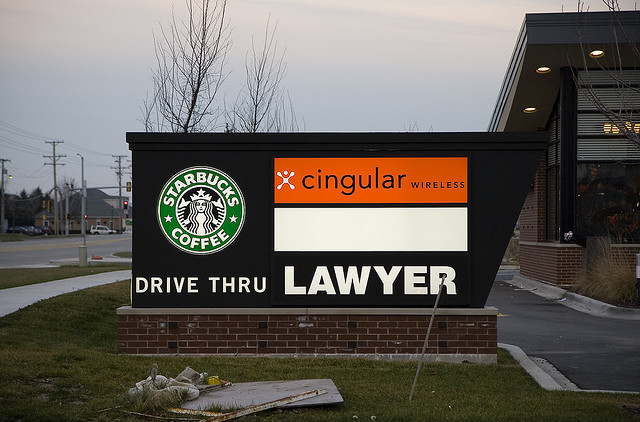Unlock the Magic in Your Story Now
Get the Free 20 questions to Ask Before Launching Your Idea workbook when you sign up for occasional updates.
Get the Free 20 questions to Ask Before Launching Your Idea workbook when you sign up for occasional updates.
The New Story Of Value
filed in Marketing, Storytelling, Strategy
 Jen is a passionate entrepreneur who has been working on her project for over three years.
Jen is a passionate entrepreneur who has been working on her project for over three years.
This project is Jen’s baby—she lives and breathes it. You know the feeling.
Jen was finally at the stage of trademarking her company internationally, and because she wanted to do things right she engaged a lawyer to file the application. As often happens when you are filing in multiple classes an adverse report was returned, meaning she might not be able to register the trademark in some of the classes without a appeal. The lawyer sent through a note which outlined Jen’s options, mostly copied and pasted from the GOV.UK response and recommendations (with one important and repeated addition).
She could proceed, appeal, limit the classes or withdraw her application. The email reminded her repeatedly that any decision and next steps would “incur further legal costs”.
The result was a very deflated Jen, not because of what the email said, but because of how it was communicated.
What if the lawyer had picked up the phone and walked Jen through everything? What if she had explained the possibilities to Jen without using jargon or putting the issue of fees front and centre?
In a world where information is freely available, when domain knowledge becomes less scarce and the cost of doing business with anyone, anywhere becomes cheaper and cheaper, all of the value we provide will be in the humanity with which we do business. The ability to walk in our customers’ shoes, to feel what they feel and then to respond in the way we’d like to be treated, is what matters now and into the future.
Yes, the law is law and legal professionals are obliged to dot the i’s and cross the t’s AND to be compensated for it. Every professional is—but not at the expense of humanity.
What Jen wants more than the facts, which she can get with two clicks of her trackpad, is empathy.
Image by Brook Novak.
Share this article
10 Brand Storytelling Lessons In 2 Minutes
filed in Marketing, Storytelling, Strategy
 Take two minutes to watch this advert from IKEA. Those two minutes are guaranteed to change how you think about marketing your business. This video is more than just advertising designed to sell something—it’s a home run in brand storytelling.
Take two minutes to watch this advert from IKEA. Those two minutes are guaranteed to change how you think about marketing your business. This video is more than just advertising designed to sell something—it’s a home run in brand storytelling.
Ten things IKEA did to make their story great
1. Understood their customer’s worldview.
They have clearly asked and answered this question a thousand times.
“Why do/will people shop at IKEA?”
2. Made the customer the hero.
The product always plays the supporting role. Always.
3. Started with the customer’s story.
Most marketing tells the story of the product or service. It screams… “we need to shift more stuff”.
This story whispers….”look what you could become”.
4. Changed how the customer felt and acted in the presence of their product.
His belief about what’s possible for him changes. The same story resonates with a college student who is kitting out her first home with flat-pack furniture and expectant parents furnishing a nursery.
5. Understood what they are really selling.
It’s not chairs or bookcases.
6. Helped us to see reflections of ourselves in the hero.
His story is our story. We are all on a quest to be the better versions of ourselves.
7. Tapped into our emotions, creating a visceral connection with the brand.
There is not a fact in sight—no product name, price, store location. Nothing.
8. Created advertising that aligns with the company’s vision and brand personality.
Did the advert make you feel good?
9. Backed up the story with the experience delivered in-store and across all touchpoints with the brand.
Consistency is key.
10. Gave potential customers something to believe in.
Helping us not just to buy products, but to buy into the brand story.
It’s so much easier to adopt default thinking and lead by telling people what we do—which is why most businesses do it. But you are not most businesses.
Your customers are waiting for you to give them something to believe in and to take them where they want to go.
Image by Linda.
Share this article
The Battle For Your Customer’s Mind
filed in Marketing, Storytelling, Strategy

You have no doubt seen the adverts for the Microsoft Surface Pro3….the tablet that’s a laptop.
Microsoft goes ‘head to head’ with Apple again in this campaign and that’s the problem.
Once you start asking the competition’s customers to rationalise choosing your product over theirs, you’ve misunderstood why people buy. Time and again advertising tries to convince rather than move us, to give us reasons to choose rather than a desire to belong.
Notice how the Mac owner in the advert keeps referring to “my Mac” while Surface dude goes on about the device having a this and a that. Deep down even Microsoft’s marketing department understands the Apple advantage, the sense of connection with the product and belonging to the brand that Mac users have. How do you out-rationalise that?
We buy with our hearts not with our heads. From a cup of coffee to a penthouse suite, what’s more important than what the product does, is how it makes us feel.
The products that we feel an emotional connection to, the services we recommend to friends and the brands that make us feel better for having experienced them have one thing in common. They feel like they are beyond compare.
The answer to increasing sales isn’t to work harder to convince people of your advantages, it’s to help them to understand who they could become in the presence of your product.
Image by Ed Yourdon.
Share this article
Clever Marketing
 Do you remember those TV ads that succeeded in interrupting or engaging us for sixty seconds? That’s what we used to call clever marketing.
Do you remember those TV ads that succeeded in interrupting or engaging us for sixty seconds? That’s what we used to call clever marketing.
Today, clever marketing is no longer about creating the best advertising campaign, it’s about understanding your customer’s worldview and how they want to feel—then delivering on that.
Clever marketing creates value by:
- Connecting people who benefit from being connected.
Task Rabbit, Airbnb and Kickstarter are great examples. - Revitalising an industry or making a monopoly wobble.
A challenger brand like Harry’s now has the opportunity to chip away at a brand as big as Gilette. - Giving people a story to tell.
Like the hundreds of GoPro user videos uploaded to YouTube every week. - Making something people want, rather than wondering how to make people want something.
Dropbox, Skype and iPod fit the bill.
Clever marketing means being the business that excels at showing and not just telling.
Image by Jimmy Emerson.
Share this article
The Story Behind Your Metrics
filed in Marketing, Storytelling, Strategy
 Lines out the door. An email list that is growing at breakneck speed. Dozens of five star reviews on Yelp. More users, subscribers or members all adding to the value of your platform.
Lines out the door. An email list that is growing at breakneck speed. Dozens of five star reviews on Yelp. More users, subscribers or members all adding to the value of your platform.
These are the stuff entrepreneurial dreams are made of.
Measuring growth and how it happens feels important. But ‘more’ isn’t the only metric of a good business, and it’s not the only thing that defines success.
There is usually a way to find data that supports a worldview and nobody is immune to using data to confirm previously held assumptions. Qualitative data measures the things that align with the values we care about, those we want our employees to embrace and our customers to sense. When we measure in this way we take into account the story behind the data. The number of meals sent back to the kitchen, staff retention, customer referrals and on and on.
Questions that will set you on the path to measuring what matters
1. How do you track how business is doing? Make a list of everything you measure.
2. Which numbers do you want to go up? Why?
3. Which numbers need to go down? Why?
4. Why are each of these particular metrics important? Create a rationale for each one.
5. What story do the numbers tell you about how your customers and colleagues feel?
6. What story do you want them to tell?
It’s tempting to want to scale, that’s what businesses do after all. As you grow it’s equally important to understand what metrics are sacred and why they matter.
Image by Gwenael Piaser.
Share this article
What’s Your Customer’s Narrative?
filed in Marketing, Storytelling, Strategy
 Why do thousands of people line up outside department stores waiting for the doors to open on Boxing Day? The stock is the same as it was two days before, after all— what’s changed is the story the buyer gets to tell himself.
Why do thousands of people line up outside department stores waiting for the doors to open on Boxing Day? The stock is the same as it was two days before, after all— what’s changed is the story the buyer gets to tell himself.
You are in the story selling business, as much as you are in the product selling business.
We all are, no matter how much we resist admitting it.
It’s as important to understand your customer’s narrative, as it is to communicate your advantages.
Start here.
Who exactly do you want your story to matter to, could you pick him out in a crowd?
What story are you asking him to believe about your product?
What actions are you taking to make that story resonate with him?
The product is always just part of the story.
Image by Anthony Abbott.
Share this article
6 Brand Storytelling Lessons From Santa Claus
filed in Marketing, Storytelling, Strategy
 I will never forget the day that the illusion of Santa was destroyed for my children. We were at a local tourist attraction in the UK during school holidays, a visit to Santa was included in the ticket.
I will never forget the day that the illusion of Santa was destroyed for my children. We were at a local tourist attraction in the UK during school holidays, a visit to Santa was included in the ticket.
We joined the queue just after 1pm to discover that Santa had gone to lunch and would be back in thirty minutes. The boys waited patiently, the older ones wondering how Santa made it through a whole night of delivering presents around the world on Christmas Eve without stopping for dinner. Minutes before he was due back on duty a door to the side of Santa’s grotto opened and one of the elves slipped out leaving it ajar and Santa in full view. There sat the very slim, thirty year old man himself, complete with jet black hair and two dimensional cotton wool beard pulled down around his neck slurping from a pot of two minute noodles. The magic shattered on the spot like a delicate bauble.
6 Brand Storytelling Lessons From Santa Claus
1. Be consistent.
2. Listen to your customers.
3. Keep your promises.
4. Change how people feel, before trying to change what they think and do.
5. Don’t aim to matter to everyone.
6. Give the right people something to believe in.
Happy holidays!
Image by John Niedermeyer.
Share this article
Who Will This Matter To?
filed in Marketing, Storytelling, Strategy
 Conventional innovation and marketing wisdom reminds us not to come up with good ideas for products or services to sell, but to solve problems instead. People need to eat, but don’t have time to cook, so open a cafe or design a new food processor with an extra chopping function. The result is six ‘me too’ cafes clustered in the same area, and a dozen food processors that don’t help people to do anything more than the last one did—all competing to solve what the business owner believes is the problem.
Conventional innovation and marketing wisdom reminds us not to come up with good ideas for products or services to sell, but to solve problems instead. People need to eat, but don’t have time to cook, so open a cafe or design a new food processor with an extra chopping function. The result is six ‘me too’ cafes clustered in the same area, and a dozen food processors that don’t help people to do anything more than the last one did—all competing to solve what the business owner believes is the problem.
Behind every problem is the story of the person with that problem, which is more nuanced than the problem itself. Great solutions address specific parts of a problem that a particular person has. And so meaningful products and services not only work, they make customers feel understood.
Opening the doors or making the motor work is the easy part.
The hard part is understanding who is going to care that you did it.
Image by Stacy Anderson.
Share this article
Wanted And Welcomed
 We still have a landline phone at home to make it easy and more economical for elderly relatives overseas to get in touch. It rings at lunchtime and at around 6pm every day. We don’t pick up, because we know these particular calls are not ones we want or welcome. I often wonder what the telemarketers will do when the last landline disappears. What’s their strategy for the day when literally nobody picks up the phone?
We still have a landline phone at home to make it easy and more economical for elderly relatives overseas to get in touch. It rings at lunchtime and at around 6pm every day. We don’t pick up, because we know these particular calls are not ones we want or welcome. I often wonder what the telemarketers will do when the last landline disappears. What’s their strategy for the day when literally nobody picks up the phone?
For as long as any of us can remember, and long before that, sales and marketing has partly been opportunistic and not in the positive sense. In medicine and opportunistic infection only occurs when a person’s resistance is lowered. The day is coming when our resistance will never be lowered. A lifetime of interruption has conditioned us to be wary—always on our guard for the moment when someone might try to steal our attention, or worse still our time.
Imagine a world where as marketers we stopped working so hard to interrupt people and devoted all of our resources to creating the thing they sought out instead.
How we reach out to people is a choice and it’s ours to make.
Image by JohnJoh.
Share this article
Sorry: Easy To Say, Not So Easy To Do
filed in Marketing, Storytelling, Strategy
 The assistant serving at the counter apologised for the long wait, then for not having received the order and finally for having no change. The cycle continued with every customer she served. There was a sorry for the wrong order given and one for the fact that the croissants hadn’t arrived that morning. And with each one her shoulders drooped a little more, along with the smile she tried to wear. Her job was to be the face of a million dollar small business and it was obviously no fun.
The assistant serving at the counter apologised for the long wait, then for not having received the order and finally for having no change. The cycle continued with every customer she served. There was a sorry for the wrong order given and one for the fact that the croissants hadn’t arrived that morning. And with each one her shoulders drooped a little more, along with the smile she tried to wear. Her job was to be the face of a million dollar small business and it was obviously no fun.
It’s become easier than ever to say sorry now that we can do it in public.
An email fired off in seconds. A 140 character public contrition on Twitter and you’re done.
“We’re sorry. We try, we don’t always get it right.”
Businesses have teams of people who can respond to complaints and fewer who are held accountable for fixing things. Sorry in isolation does not constitute an apology. Every apology has two parts. The admission that something went wrong, followed by the action taken that will mean it doesn’t happen again.
So when the Telco apologises for interrupting customers at the weekend. The apology must be more than an admission. Part two involves changing something so that it doesn’t happen again.
When the airline cancels flights, says sorry, then tells passengers to rebook themselves on the next available, the refund shouldn’t take fifteen uncertain business days to process.
When you or your staff start and end the day by apologising to every single customer it’s time to look at what isn’t working and to fix it. We need to understand why people were unhappy, where we went wrong and then to follow through, showing them that we’re sorry by doing better next time.
A sorry doesn’t help or excuse your business unless you back it up. Being sorry means doing something to make things better. Saying sorry should mean that you care enough to do that.
Your brand story is always less about what you say and more about what you do.
Image by Marc Thiele.